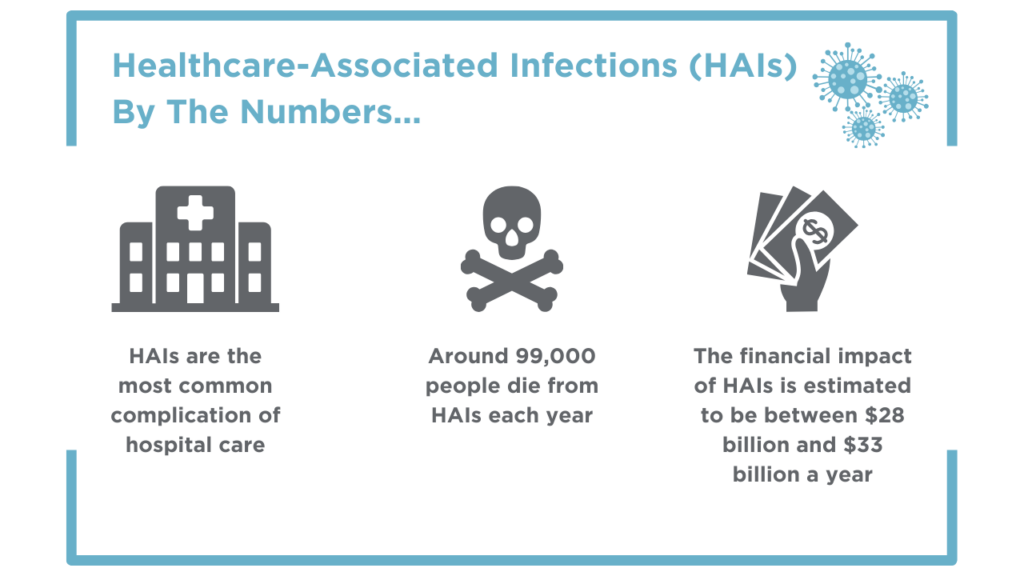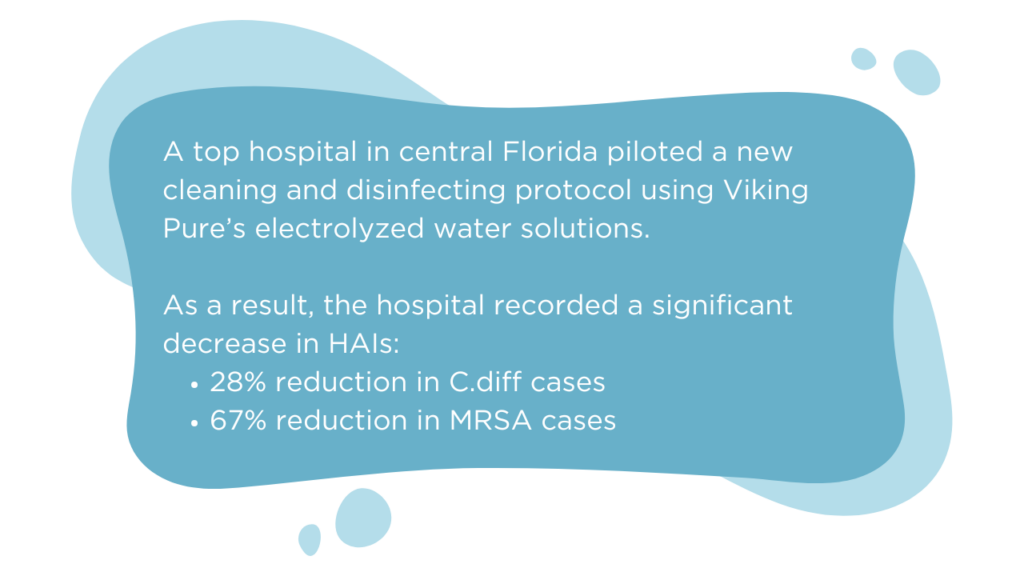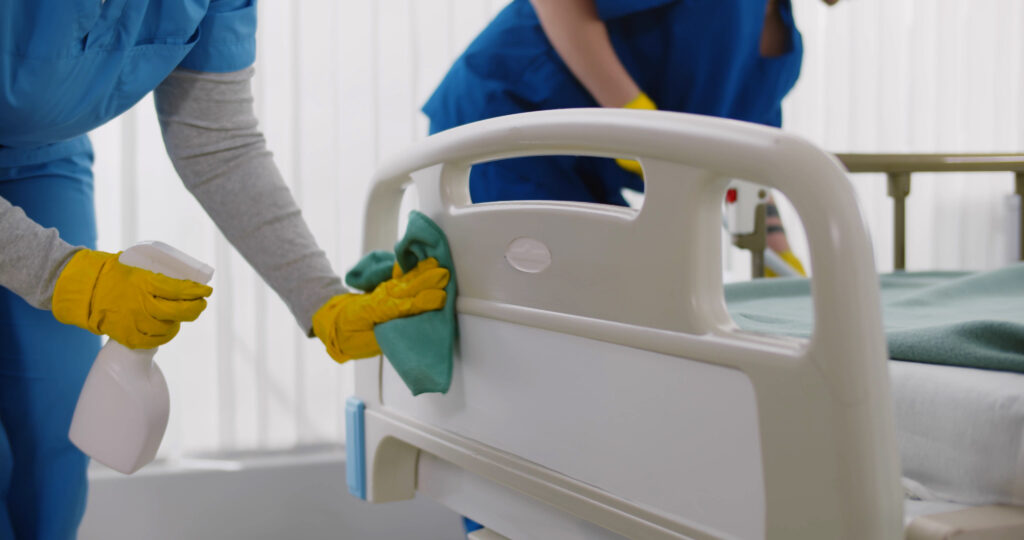Addressing this silent threat demands a multifaceted approach that incorporates advanced technologies and evidence-based practices. This article explores the scope of the problem, environmental contributors, innovative solutions, regulatory considerations, and future trends in infection prevention.
The Scope of the Problem
HAIs affect one in 31 hospitalized patients on any given day in the United States, according to the Centers for Disease Control and Prevention (CDC). These infections, including bloodstream infections (BSIs), urinary tract infections (UTIs), pneumonia, and surgical site infections (SSIs), are primarily caused by pathogens such as:
- Methicillin-resistant Staphylococcus aureus (MRSA)
- Clostridioides difficile (C. difficile)
- Vancomycin-resistant Enterococci (VRE)
- Multidrug-resistant Gram-negative bacteria
The financial implications are staggering. The U.S. healthcare system spends an estimated $28 billion annually on direct medical costs related to HAIs, with an additional $12 billion in societal costs due to lost productivity and other factors.
Beyond the financial burden, HAIs take a significant human toll. Preventable infections claim thousands of lives annually, underscoring the urgent need for comprehensive prevention strategies.

Environmental Factors in HAI Transmission
Environmental surfaces, air quality, and water systems play critical roles in the transmission of HAIs. High-touch surfaces such as bedrails, doorknobs, and medical equipment can harbor pathogens for days if not adequately cleaned and disinfected. Meanwhile, airborne pathogens can travel through poorly ventilated spaces, and contaminated water systems can serve as reservoirs for infections like Legionella.
The Limitations of Traditional Cleaning Methods
Traditional cleaning methods often fall short in eliminating pathogens:
- Manual Cleaning: Inconsistent application of disinfectants and human error can leave behind harmful microorganisms.
- Chemical Disinfectants: While effective, many traditional disinfectants pose risks to staff and patients due to toxicity and chemical residues.
- Inadequate Training: Insufficient staff training on proper cleaning protocols contributes to suboptimal disinfection.
Innovative Solutions for HAI Prevention
The fight against HAIs has spurred the development of advanced cleaning technologies and sustainable solutions. Among the most promising innovations are:
Electrolyzed Water as a Sustainable Disinfectant
Electrolyzed water, produced by passing an electrical current through a saltwater solution, generates hypochlorous acid (HOCl) and sodium hydroxide (NaOH). These compounds offer several advantages:
- Efficacy: Proven to kill 99.999% of pathogens, including MRSA and C. difficile.
- Safety: Non-toxic and non-irritating to skin and eyes.
- Sustainability: Reduces the need for harsh chemical disinfectants and minimizes environmental impact.

UV-C Disinfection
Ultraviolet-C (UV-C) light is another powerful tool for reducing HAIs. By damaging the DNA and RNA of microorganisms, UV-C effectively inactivates a wide range of pathogens. Benefits include:
- Rapid Action: Disinfects surfaces and air in minutes.
- Automation: Robotic systems can deliver UV-C light in hard-to-reach areas.
- Reduction in Chemical Use: Complements traditional cleaning methods and enhances disinfection outcomes.
Advanced Air Filtration and Monitoring Systems
High-efficiency particulate air (HEPA) filters and advanced air purification technologies improve indoor air quality by removing airborne pathogens. Paired with real-time air quality monitoring, these systems enhance infection control.
Regulatory and Compliance Considerations
Regulatory agencies, including the CDC, World Health Organization (WHO), and Occupational Safety and Health Administration (OSHA), provide guidelines for preventing HAIs. Key recommendations include:
- Adherence to Standard Precautions: Hand hygiene, use of personal protective equipment (PPE), and safe injection practices.
- Environmental Cleaning Protocols: Comprehensive cleaning and disinfection policies tailored to the needs of specific facilities.
- Water Management Plans: Preventing waterborne pathogens through routine monitoring and maintenance of water systems.
- Antimicrobial Stewardship Programs: Ensuring the appropriate use of antibiotics to combat resistance.
Find the full resources below:
- CDC’s Guidelines for HAI Prevention and Control for Healthcare
- WHO Guidelines on Prevention and Control of Hospital Associated Infections
- OSHA Guidelines on Hospital-Wide Hazards
Healthcare facilities must also comply with accreditation standards from organizations such as The Joint Commission, which emphasizes infection prevention in its evaluation criteria.
Future Trends in HAI Prevention

As technology evolves, so do the tools and strategies for combating HAIs. Emerging trends include:
AI-Driven Cleaning Systems
Artificial intelligence (AI) is transforming infection control by enabling:
- Predictive Analytics: Identifying high-risk areas and optimizing cleaning schedules.
- Automated Systems: Guiding robotic cleaning devices for consistent and thorough disinfection.
- Data-Driven Decisions: Providing actionable insights through real-time monitoring.
Robotics in Healthcare Cleaning
Robotic cleaning systems equipped with UV-C light or electrostatic sprayers offer unparalleled efficiency and precision. These systems can navigate complex healthcare environments and disinfect large areas in minimal time.
Genomic Surveillance
Advanced genomic techniques allow for the rapid identification of pathogens and their resistance patterns. This information helps tailor infection prevention strategies and enhances outbreak response.
Actionable Insights for Healthcare Facility Managers
To combat HAIs effectively, healthcare facility managers and decision-makers should:
- Invest in Advanced Technologies: Adopt sustainable cleaning solutions such as electrolyzed water and UV-C disinfection systems.
- Enhance Staff Training: Provide ongoing education on infection prevention protocols and proper use of cleaning technologies.
- Monitor and Evaluate: Implement real-time monitoring systems to track environmental cleanliness and air quality.
- Collaborate with Experts: Partner with infection prevention specialists to develop and refine policies.
- Prioritize Sustainability: Choose eco-friendly solutions that protect both human health and the environment.

Healthcare-associated infections remain a formidable challenge, but advancements in cleaning technologies and infection prevention practices offer new hope. By embracing innovative solutions like electrolyzed water or UV-C disinfection, and AI-driven systems, healthcare facilities can significantly reduce the prevalence of HAIs. These efforts not only enhance patient safety but also contribute to a more sustainable and efficient healthcare system.
At Viking Pure Solutions, we are committed to empowering healthcare organizations with cutting-edge, environmentally friendly e-water cleaning and disinfecting technology. Together, we can tackle the silent threat of HAIs and build safer, healthier communities.




